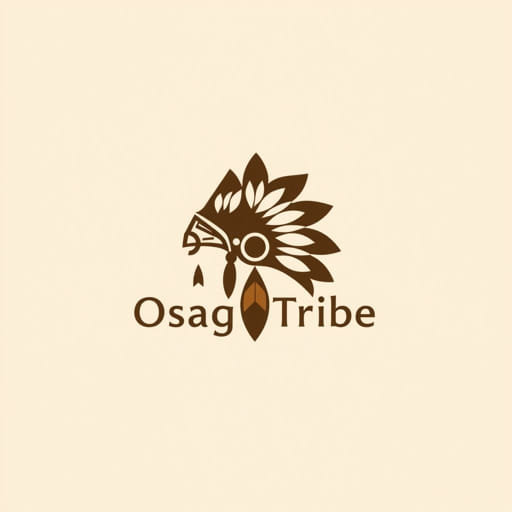The Osage tribe, a Native American nation originally based in the Ohio Valley before migrating westward, rose to immense fame and wealth in the early 20th century due to oil discovered on their lands in Oklahoma. This sudden influx of wealth made members of the tribe some of the richest people per capita in the world at the time. However, over the decades, circumstances changed. Today, many wonder: is the Osage tribe still wealthy? The answer requires a closer look at history, legal battles, tribal governance, and modern economic activity. Understanding the tribe’s economic journey helps provide insight into Native American wealth in general and how it is sustained or diminished over generations.
Historical Wealth from Oil Royalties
The Osage Oil Boom
In the early 1900s, oil was discovered on Osage reservation lands in Oklahoma. Due to an agreement the tribe had made with the federal government during the Allotment Era, mineral rights were retained collectively by the tribe. This meant that profits from oil extraction went into a trust managed by the U.S. government, and the revenue was distributed among tribal members in the form of ‘headrights.’
Each headright gave its owner a share of the total income from oil leases. At the peak of oil production in the 1920s, Osage tribal members received astonishing sums of money. Mansions, luxury cars, and private tutors were common for Osage families. However, this sudden wealth also made the Osage targets of exploitation and violence, culminating in what is now referred to as the ‘Reign of Terror,’ during which dozens of Osage were murdered for their headrights.
Mismanagement and Theft
The wealth of the Osage tribe attracted attention from opportunists and government officials alike. Guardianship laws were put in place that allowed white guardians to control the finances of many Osage members deemed incompetent. This led to widespread financial abuse, theft, and fraud. Even into the 21st century, the tribe continued to confront the lingering consequences of this mismanagement.
Modern Financial Standing
Trust Fund Settlements
In 2011, the Osage Nation reached a $380 million settlement with the U.S. government for decades of mismanagement of tribal funds and natural resource royalties. This settlement was one of the largest of its kind and marked a significant step toward financial justice. It allowed the tribe to reinvest in community development, education, and economic diversification.
Economic Diversification
While the oil wealth of the past is no longer as substantial, the Osage Nation has taken measures to diversify its economy in recent decades. This includes investments in:
- Gaming and casinos
- Healthcare services
- Retail and real estate development
- Education and cultural preservation
The Osage Nation operates successful casinos in Oklahoma, generating steady revenue that supports public services and employment within the tribe. The revenue is used to fund health clinics, housing projects, education grants, and cultural programs.
Are Osage Tribal Members Still Wealthy?
Collective Wealth vs. Individual Wealth
While the Osage Nation as a tribal government is relatively stable and financially successful, not every individual tribal member is wealthy. Wealth distribution has changed since the days of headrights and oil royalty windfalls. Over generations, many headrights were sold, inherited by non-Osage individuals, or lost through legal and illegal means. This has led to a decrease in per capita wealth among Osage descendants.
Some families still retain oil royalty rights and receive income, though significantly less than during the 1920s. Others have benefited from tribal business revenues, employment opportunities, and educational support provided by the tribal government. However, like many Native American communities, the Osage still face challenges related to income inequality, health disparities, and cultural survival.
Community Prosperity
Although not every Osage tribal member is wealthy by standard economic definitions, the community as a whole has made significant strides toward sustainability and growth. Tribal programs focused on economic empowerment, education, and health have improved quality of life for many members. Additionally, the cultural identity of the Osage remains strong, bolstered by community events, language revitalization programs, and tribal governance efforts.
Current Challenges and Future Outlook
Protecting Tribal Resources
The Osage Nation continues to advocate for stronger protections of its remaining natural resources and land rights. Legal battles over mineral rights, land ownership, and environmental concerns are ongoing. There is also increasing attention to issues like energy transition, which may affect future oil-based revenue streams.
Generational Wealth and Education
One of the key focuses of the modern Osage government is fostering long-term generational wealth through education and career development. Scholarships, internships, and business grants are tools used to equip younger members with the means to succeed in a competitive economy. These initiatives, while not guaranteeing individual wealth, lay the foundation for community progress and self-sufficiency.
Continued Legal Complications
There remain complications related to the historical distribution and inheritance of headrights. Many are still owned by non-Osage individuals, limiting the benefits to the tribe. Legislative efforts have been introduced to help restore these rights or find alternative ways to bring the wealth back under tribal control, though progress is slow and politically complex.
The Osage tribe is no longer the astonishingly wealthy community it once was during the oil boom of the early 20th century, but it has successfully transitioned into a modern Native American nation with a diversified economy, strong leadership, and a focus on cultural resilience. While individual wealth varies widely, the Osage Nation maintains a relatively healthy financial position through its enterprises and settlements. The question of whether the Osage are still wealthy depends on how one defines wealth purely monetary, or as a combination of cultural strength, community stability, and economic sustainability. In that broader sense, the Osage have remained a powerful and resilient people, continuing to adapt and thrive in the face of both historical and modern challenges.
